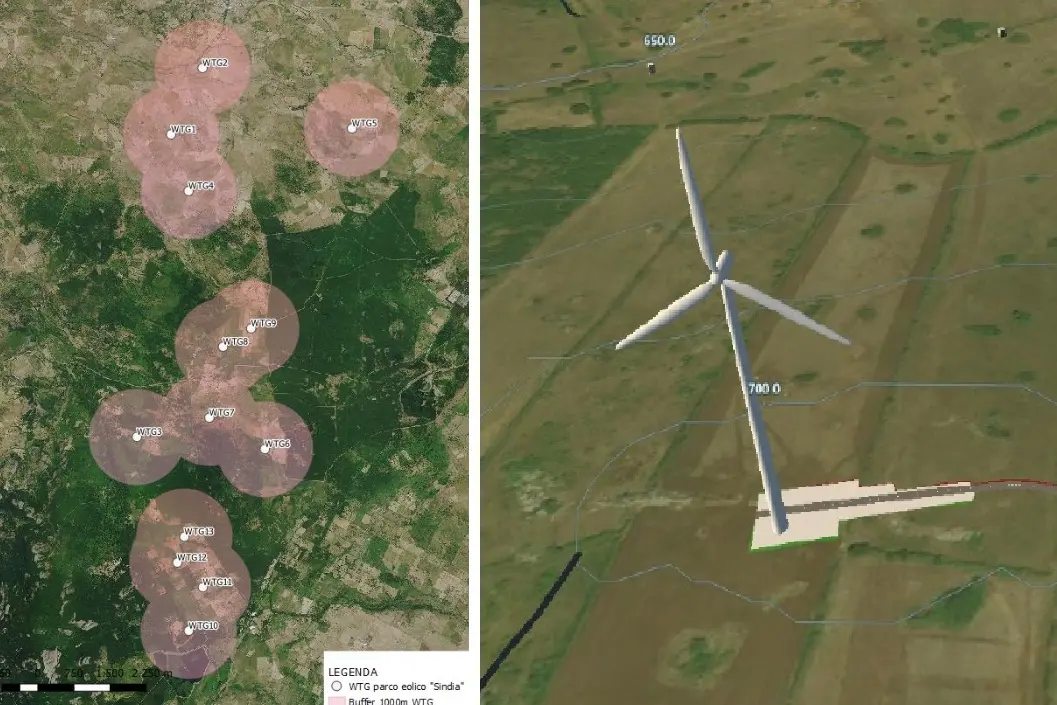The Sardinian landscape scarred by shovels? For wind companies it is only worth 89 euros per hectare for one year
This is how much (little) the good protected by the Constitution is considered in the projects. In the face of the promise of an alleged rain of millions for the territoryPer restare aggiornato entra nel nostro canale Whatsapp
An inestimable and intangible value? No: the Sardinian landscape has a price and it seems it could be sacrificed on the altar of the astonishing sums that are promised for the territory. To calculate it there is also a sort of tariff. How much is it worth? If agricultural: 89 euros per hectare, for one year. That is: 24 cents a day. An (insignificant) figure, obviously, estimated by those who want to overturn that landscape - protected by the Constitution - with thousands of shovels.
Thirteen of these, 200 meters high, Enel Green Power wants to install between Sindia, Santu Lussurgiu, Borore, Scano di Montiferro and Macomer (territories affected by rotors and related works). The procedure before the Ministry of the Environment and Energy Security is already at an advanced stage, so much so that the deadline for submitting observations expires on 19 June. The Region has long presented its own: 224 pages of criticism. And among the impressive amount of documents there is also the cost/benefit analysis carried out by the company.
Reference is made to the “impact path” of the wind farm. That if at a global level they are on "atmosphere, consumption of non-renewable resources, public health and biodiversity" , they specifically concern "landscape, noise, fauna, loss of ecosystem services, use and occupation of land, limitations on building rights and social component -economic".
It must be said immediately, also because it is obvious: in the relationship between costs and benefits, society estimates the latter as enormously superior to the former. In 30 years (average duration of a wind farm) 140 million benefits are calculated (of which 131,040,000 would derive from public health gained and reduced atmospheric emissions and 5 destined for local workers) and just 41 in costs for the territory .
Among the voices of the latter there is, in fact, the landscape. Which for the area affected by Enel's project is considered "agricultural". F or this there is a "willingness to pay (WTP)" which in 2023 was estimated at 268 euros per hectare. The landscape, based on an OECD report, «can be considered divided into key components . That is, the structure: including the natural components (i.e. flora, fauna, habitats and ecosystems), the use of the land (crops and cultivation systems), the anthropic artefacts or traditional textures (i.e. hedges, dry stone walls, built historical)". Then "the functions: that is, places of life, work, leisure, including ecosystem services". And again "the values: concerning the costs of maintaining the landscape by farmers and the value that society attributes to the rural landscape, in terms of cultural and recreational value".
And here is the calculation: «For the purposes of estimating the environmental cost resulting from the impact of the project on the agricultural landscape, which is entirely indicative and affected by numerous limitations» by the same admission of those who do the calculations, it is necessary to «evaluate the "loss" of value landscape within the aforementioned area in an amount of 30% compared to the amount of 268 euros per hectare due to the fact that, in the reference area, no appreciable changes will be induced with respect to the continuation of current agricultural practices nor are they expected to affect, irreversibly the territorial textures, ecosystems or historical-cultural heritage". The "reference area" is estimated as a circle with a radius of approximately one kilometer from each blade.
Therefore: «With these assumptions, given that the surfaces in which a more marked landscape interference was estimated were equal to 31,258,511 m² (approximately 31.3 km²), the external cost to be attributed to the landscape impact is estimated at 3126 hectares x €268/ha x year x 30% = €251,585.48/year". For 30 years, therefore, the distorted landscape would cost just around 7.5 million euros.
It's "just" an agricultural landscape anyway, you might say. In the Region they see it differently: the General Directorate of the Environment writes that in all the documents, defined as having been created with «little editorial attention», we read that «the presence of agricultural activities is reduced to marginal, peripheral presences. This pervasive image", the observation continues, "is obviously not true. In these places there are high quality agricultural companies, which also pursue organic production, which distribute their production throughout the regional territory and even beyond it and which both from the activity of a multi-year construction site and from the loss of productive land would have serious damage. This done, completely clouding the body of the project. The numbers, therefore, don't add up.
Enrico Fresu
